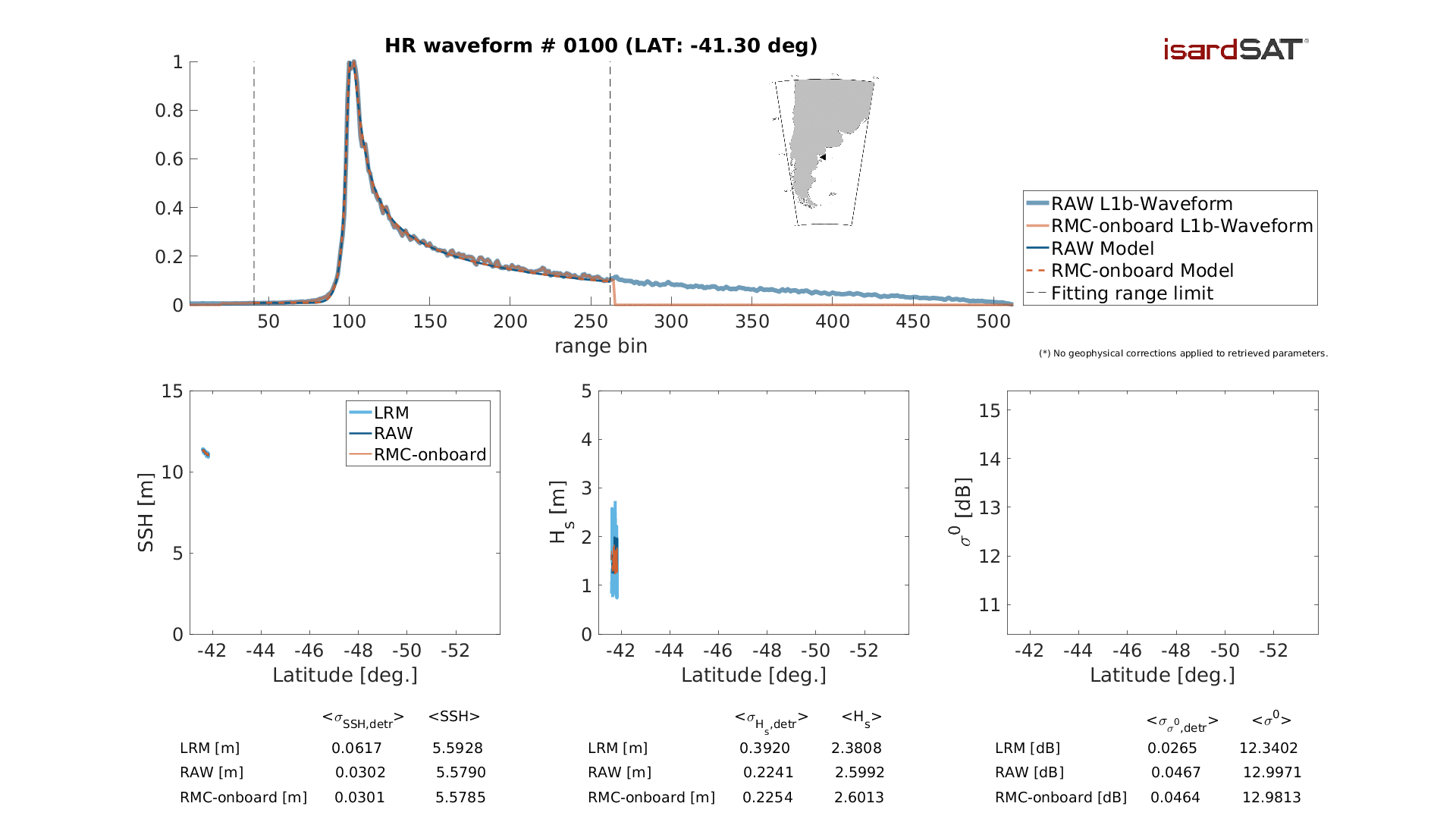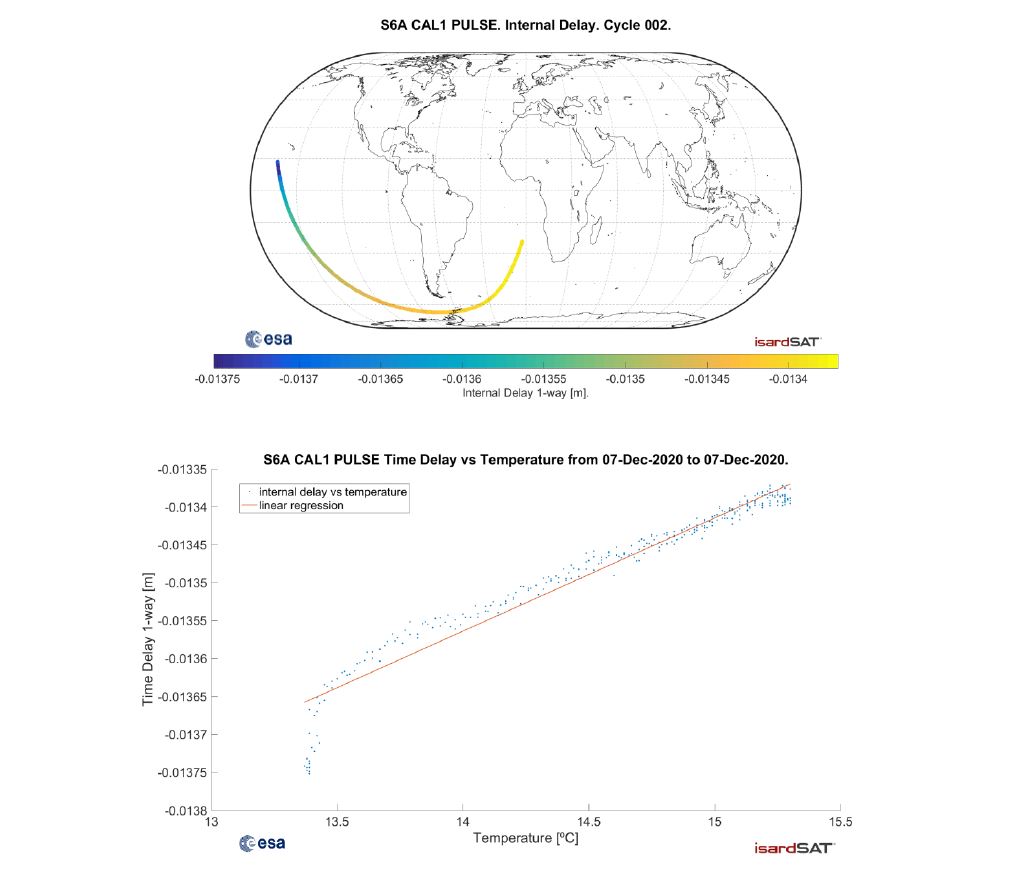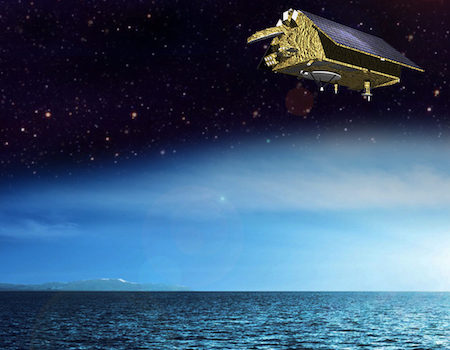isardSAT is processing the first data acquired by Sentinel-6, which was successfully launched on the 21st of November. First science data are of exceptional quality.
Science data
Altimeter Delay Doppler multilook backscattered power waveforms show good agreement between Raw and RMC modes over open ocean. Statistical analysis of the retrieved geophysical parameters sea surface height (SSH), significant wave height (Hs) and backscattering coefficient (Sigma-0) from SAR mode and conventional altimeter theoretical model fitting reveal inappreciable or minor bias between the three modes.

Instrument calibration
isardSAT is also monitoring the internal calibration, which allows to know how healthy the altimeter is. Calibration data are used to correct science measurements.
The map below shows internal delay in SAR mode around the orbit, while the plot depicts the expected correlation of the internal delay versus temperature. Once the instrument is thermally stabilised, the temperature variations will be minimum. The science data are corrected by internal delay as well as other instrument corrections.

Satellite attitude
isardSAT’s activities also include the analysis of the three attitude parameters of the radar altimeter antenna (roll, pitch and yaw). All three parameters show a certain motion within a one orbit period, but the yaw shows the greatest motion, although it has the least impact on science data, and the pitch the component with the smallest motion. These results are within the mission requirements.

